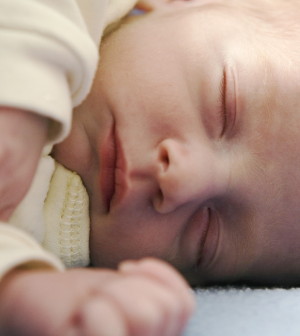- Double Mastectomy May Offer No Survival Benefit to Women With Breast Cancer
- Toxic Lead Found in Cinnamon Product, FDA Says
- Certain Abbott Blood Sugar Monitors May Give Incorrect Readings
- Athletes Can Expect High Ozone, Pollen Counts for Paris Olympics
- Fake Oxycontin Pills Widespread and Potentially Deadly: Report
- Shingles Vaccine Could Lower Dementia Risk
- Your Odds for Accidental Gun Death Rise Greatly in Certain States
- Kids From Poorer Families Less Likely to Survive Cancer
- Tough Workouts Won’t Trigger Cardiac Arrest in Folks With Long QT Syndrome
- At-Home Colon Cancer Test Can Save Lives
Home Nurse Visits May Improve Survival of Moms, Babies


Home visits from nurses during pregnancy and a child’s first two years help improve survival odds for both mothers and children, according to new research.
The study followed more than 1,100 mother-child pairs from disadvantaged, urban neighborhoods in Memphis, Tenn., for two decades. Poor women have much higher death rates than wealthier women, according to background research in the study. And their children are more likely to die from accidents, homicide and sudden infant death syndrome, research has shown.
“Often these are mothers living on the margins of society,” said study researcher David Olds, professor of pediatrics at the University of Colorado, Aurora. “And we now know if we reach out to them and engage them, we can make a big difference in the health and development of the mothers and the children, including their survival.”
The study, published online July 7 in JAMA Pediatrics, began in 1990. Researchers assigned the first-time mothers-to-be to one of four treatment groups.
One group received only transportation for prenatal care. Another received transportation plus screening for infants and toddlers to evaluate their development. A third group received transportation plus home visits. A fourth group received all the services.
Mothers without home visits were about three times as likely to die during the follow-up period as the moms who got nurse visits, Olds found. About 3.7 percent of those who weren’t visited died compared to 1.3 percent of those who received all the services, including visits by nurses.
The children benefited as well. By age 20, those whose mothers received all of the services were still alive while 1.6 percent of kids whose moms got only transportation and screening had died, the study found.
The results didn’t surprise Dr. David Mendez, an attending neonatologist at Miami Children’s Hospital in Florida.
“Sometimes an extra pair of hands, an extra pair of eyes to see what’s going on in the household with a new baby can be important,” said Mendez, who was not involved in the study.
“Nurses perhaps take a role similar to what a good grandmother does,” he said. “They are able to give the mother cues as to when the babies aren’t doing so well [and may need medical help].”
The program — known as the Nurse-Family Partnership — operates in about 500 sites, Olds said. “The schedule calls for nurses to visit about once every two weeks during pregnancy and once a week for the first six weeks after delivery and then essentially every other week until the baby is 2 years,” Olds said.
In this study, nurses completed about half of those visits, he said. In some cases, the get-togethers were difficult to schedule because some of the mothers became homeless and were hard to reach, he said.
While visiting, nurses discuss how to have a healthy pregnancy and how to be attentive to a child’s needs, among other topics. On average, the publicly funded program costs about $9,000 per family over the 2.5 years of enrollment, Olds said.
According to one analysis, the return in savings from unneeded hospitalization and other health care services is about $5.70 for every dollar spent, he said.
The program is funded in various ways, he said. Some women have been covered under the Affordable Care Act. Others are supported by various state funds, he said.
The link between the at-home visits and improved survival is very strong, Olds said, although he can’t say with certainty it is a cause-and-effect relationship.
However, “in this study, within the limits of statistical probability, we can say with 95 percent confidence that the mothers and children visited by nurses were less likely to die,” he said. “That is almost as good as it gets.”
More information
To learn more about the prenatal period, visit the American Academy of Pediatrics.
Source: HealthDay
Copyright © 2024 HealthDay. All rights reserved.










